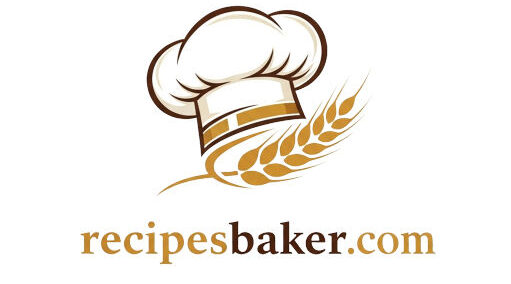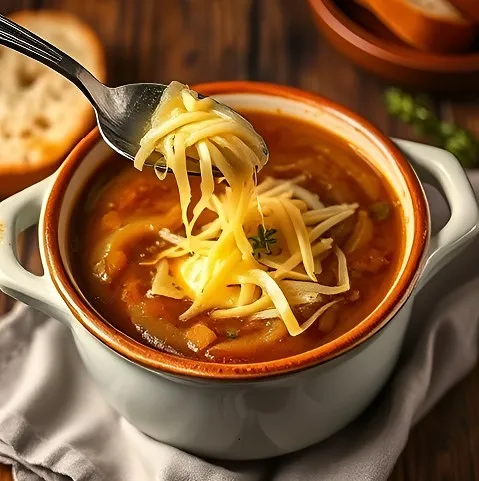Alright, let’s get cooking! So, you’re a fan of French Onion Soup, huh? Me too! It’s like a warm hug in a bowl, especially when it’s chilly outside. But hey, if you’re anything like me, you also wonder about the nitty-gritty stuff, like, you know, what’s actually in this deliciousness. That’s where the calories in French onion soup come into play. This article is gonna break down everything you need to know about the french onion soup calories, plus a whole lot more about what makes this soup tick nutritionally. We’ll keep it simple and easy, so you can keep enjoying your soup without all the fuss!
Table of Contents
Introduction to French Onion Soup
A Delicious Classic: Briefly describe French Onion Soup and its popularity.
French Onion Soup – just the name sounds kinda fancy, right? Honestly, it’s been a hit for ages! Think about it: sweet, caramelized onions simmered in a rich, savory broth, usually beef. Then, bam! It’s topped with a crusty piece of bread and a blanket of melted cheese, often Gruyere. People love it because it’s so flavorful and comforting, perfect for a cold day or as a starter at a nice meal. It’s a classic for a reason – it just hits the spot!
Why the Focus on Calories? Addressing health consciousness and dietary awareness.
Okay, let’s face it, we live in a world where everyone’s a little more aware of what they’re eating. Whether you’re counting macros, trying to watch your weight, or just curious about what’s in your food, calories are a big part of the conversation. It’s not about being perfect all the time, but knowing the french onion soup calories can help you make smart choices and fit it into your overall diet without any surprises. Plus, understanding the calorie count helps if you’re comparing different soups or meal options.
Key Takeaway: Understanding the average caloric range of French Onion Soup.
So, what’s the bottom line when it comes to french onion soup calories? Generally speaking, a typical serving of French Onion Soup can land somewhere in the ballpark of 300 to 400 calories. However, and this is a big however, that number can bounce around depending on things like the recipe, the size of the serving, and what kind of toppings are involved. We’ll dig into all those juicy details later, so you can get a real handle on what you’re getting with your bowl of French Onion goodness.
Decoding the Average Calories in French Onion Soup

Typical Calorie Count Per Serving: Presenting the commonly cited calorie range.
Alright, let’s get down to brass tacks. You’re probably wondering, “Okay, but exactly how many french onion soup calories are we talking about?” Well, as we mentioned, it usually falls somewhere between 300 and 400 calories for a standard serving. However, this is just an average, you know? It’s like saying the average temperature in July is 75 degrees – it can be hotter or colder depending on the day. So, while this range gives you a good starting point, keep in mind that different factors can push those french onion soup calories up or down.
Standard Serving Size Considerations: Defining what constitutes a “serving.”
Now, before you start picturing huge bowls overflowing with soup, let’s talk about what a “serving” actually means. Typically, a standard serving of soup is around one cup, which is about 8 fluid ounces (or 240 milliliters if you’re being precise). However, restaurants sometimes serve larger portions, and even when you’re making it at home, your “bowlful” might be more than a single cup. Therefore, it’s important to pay attention to the serving size listed on recipes or restaurant menus to get a more accurate idea of the soup tick nutritionally. you’re consuming.
French Onion Soup Calories: A General Overview
So, to sum it up, the average range of french onion soup calories is a helpful guideline. But like trying to guess the calorie count of a BBQ chicken flatbread just by looking at it, it’s not an exact science without more details. To really understand the french onion soup calories, we need to look at what goes into making this tasty soup. And that’s exactly what we’ll get into next!
The Nutritional Profile of Soup Beyond Calories

Macronutrient Breakdown: Carbohydrates, Fats, and Protein in a typical serving.
Beyond just the french onion soup calories, it’s helpful to know about the big three: carbs, fats, and protein. Typically, French Onion Soup will have a moderate amount of carbohydrates, mostly from the onions and the bread topping. The fat content can vary quite a bit, depending on how much butter or oil is used and the type of cheese. As for protein, you’ll get some from the beef broth and the cheese, although it’s generally not super high in protein compared to, say, a steak.
Micronutrients: Vitamins and minerals present, even in small amounts.
Even though we often focus on french onion soup calories and macronutrients, there are some good-for-you bits hiding in there too! Onions, for example, contain vitamins like vitamin C and some B vitamins, along with minerals like potassium. Beef broth can also contribute small amounts of certain minerals. Now, let’s be real, French Onion Soup isn’t exactly a health food powerhouse like a salad, but it does offer a little something beyond just the calories.
Understanding the Complete Picture: Why calories aren’t the only metric.
Honestly, just focusing on french onion soup calories doesn’t tell the whole story. Think about it – 300 calories of French Onion Soup will affect your body differently than 300 calories of, say, pure sugar. The nutrients, or lack thereof, play a big role. So, while keeping an eye on the onion soup calories is useful, considering the other nutrients can help you make more informed choices about how it fits into your overall diet. It’s about the big picture, not just one number!
Key Ingredients and Their Impact on Soup
The Role of Onions: Relatively low in calories but contributes to flavor.
Okay, let’s talk about the star of the show – the onions! Honestly, when it comes to french onion soup calories, onions themselves aren’t the biggest culprit. They’re actually pretty low in calories. It’s all the caramelizing, usually done with butter or oil, that starts to add up. But flavor-wise? Onions are where it’s at! They bring that signature sweetness and depth that makes Onion Soup so darn good.
Beef Broth: Calorie content based on fat content and added ingredients.
Next up, the broth. Traditionally, beef broth is used, and its calorie count can vary. If you’re using a richer, full-fat broth, you’re looking at more onion soup calories compared to a low-sodium or fat-free option. Some broths also have added sodium or other ingredients that can subtly change the nutritional profile. So, peeking at the nutrition label on your broth carton is a smart move.
The Influence of Butter and Oil: Significant contributors to fat and calories.
Alright, here’s where things can get a little more calorie-heavy. The butter or oil used to sauté those onions really plays a role in the overall onion soup calories. Butter, especially, adds a good chunk of fat. You know, that rich, velvety feel? That’s often thanks to the butter. Oil can be a slightly lighter option, but still contributes to the fat and calorie content.
Wine in French Onion Soup: Calorie contribution and potential variations.
A splash of wine is a classic addition to French Onion Soup, adding another layer of flavor. While the alcohol cooks off, the calories from the wine do stick around. Typically, a dry white wine is used, and while it doesn’t add a massive amount of french onion soup calories, it’s something to consider if you’re being mindful of every calorie.
The Bread Topping: Baguette slices and their caloric impact.
Ah, the cheesy, bread-y top – arguably one of the best parts! But let’s be real, those baguette slices definitely contribute to the onion soup calories. The type of bread, its thickness, and whether it’s toasted or not can all make a difference. It’s kind of like choosing between regular fries and sweet potato fries; both are good, but different calorie-wise. Speaking of tasty bread, ever tried a BBQ chicken flatbread? Totally different, but also relies on a good base!
The Cheese Factor: Gruyere, Swiss, and other cheese calorie counts.
Finally, let’s talk cheese. Gruyere is the traditional choice, and it’s wonderfully melty and flavorful. However, cheese, in general, is a significant source of fat and therefore french onion soup calories. Other cheeses like Swiss might have slightly different calorie counts, but they’re all going to add to the overall caloric punch of your soup.
How Different Recipes Affect French Onion Soup Calories
Traditional vs. Modern Recipes: Exploring variations in ingredient usage.
You know, like with any classic dish, there are tons of variations on Onion Soup out there. Traditional recipes often stick to the basics – onions, beef broth, butter, wine, bread, and Gruyere. But modern takes might swap out ingredients or add extras. For example, some might use different types of stock, add cream for extra richness (and french onion soup calories!), or even throw in different herbs and spices. These tweaks can definitely shift the calorie count.
Restaurant Versions: Often higher in calories due to richer ingredients.
Let’s be honest, restaurant versions of French Onion Soup often taste incredibly indulgent, right? That’s often because they tend to be a bit more generous with the butter, cheese, and richer broths. Plus, portion sizes in restaurants are usually bigger than what you’d serve yourself at home. So, while that restaurant bowl might be super satisfying, it’s likely packing more french onion soup calories than a homemade version. If you’re looking for a lighter option, maybe consider sharing or asking about smaller portions. For more delicious recipes, check out our recipe article.
Homemade Variations: Opportunities for calorie control.
The great thing about making French Onion Soup at home is that you’re in control! Want to cut down on the french onion soup calories? You can use less butter, opt for a lower-fat cheese, or use more broth and fewer toppings. You can even experiment with whole wheat bread for the topping. It’s all about making choices that fit your dietary needs and preferences. You can really customize it to be as light or as decadent as you like!
Restaurant vs. Homemade Onion Soup Calories: A Detailed Comparison

Restaurant Portions and Preparation: Factors leading to higher calorie counts.
When you order Onion Soup at a restaurant, you’re often getting a larger portion than you might make at home. Restaurants sometimes use more butter or oil to get that rich flavor, and they tend to be pretty generous with the cheese – which, as we know, adds to those onion soup calories. Plus, the bread topping might be thicker or there might be more of it. Honestly, it’s all about creating that wow factor, but sometimes that comes with extra calories.
Controlling Calories at Home: Making healthier choices with ingredients.
Making the dish at home puts you in the driver’s seat when it comes to french onion soup calories. You can choose to use less butter or opt for olive oil. You can control the amount of cheese you use, maybe even try a lower-fat option. Using a leaner beef broth can also make a difference. It’s about making smart swaps and being mindful of the quantities you’re using. That way, you can still enjoy the deliciousness without as many calories.
Factors That Can Significantly Increase Soup Calories
Extra Cheese: The impact of adding more cheese on top.
Let’s be real, who doesn’t love a gooey, cheesy top on their Onion Soup? But adding extra cheese is a surefire way to bump up those onion soup calories. Cheese is delicious, but it’s also calorie-dense, mostly due to its fat content. So, while that extra layer of Gruyere might look amazing, it’s definitely adding a significant number of calories to your bowl.
Larger Bread Portions: The calorie jump from generous baguette slices.
Similarly, the bread topping can quickly escalate the soup . Those crusty baguette slices are tasty, but the more bread you pile on, the more carbs and calories you’re adding. Think of it like adding extra toppings to a pizza – it tastes great, but it increases the overall calorie count. Maybe stick to one or two smaller slices to keep things in check.
Cream or Milk Additions: How creamy versions differ in calorie content.
While traditional French Onion Soup doesn’t typically include cream or milk, some variations do. Adding cream or milk makes the recipe richer and creamier, but it also adds more fat and, consequently, more onion soup calories. These creamy versions can be significantly higher in calories compared to the classic broth-based recipe.

